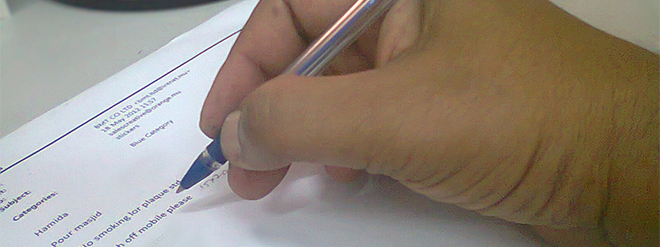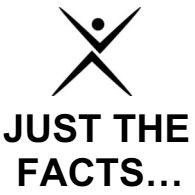
What is dysgraphia?
Dysgraphia is a Greek word. The base word graph refers both to the hand’s function in writing and to the letters formed by the hand. The prefix dys indicates that there is impairment. Graph refers to producing letter forms by hand. The suffix ia refers to having a condition. Thus, dysgraphia is the condition of impaired letter writing by hand, that is, disabled handwriting. Impaired handwriting can interfere with learning to spell words in writing and speed of writing text. Children with dysgraphia may have only impaired handwriting, only impaired spelling (without reading problems), or both impaired handwriting and impaired spelling.
What causes dysgraphia?
Research to date has shown orthographic coding in working memory is related to handwriting and is often impaired in dysgraphia. Orthographic coding refers to the ability to store written words in working memory while the letters in the word are analyzed or the ability to create permanent memory of written words linked to their pronunciation and meaning. Children with dysgraphia do not have primary developmental motor disorder, another cause of poor handwriting, but may have difficulty planning sequential finger movements such as the touching of the thumb to successive fingers on the same hand without visual feedback. Children with dysgraphia may have difficulty with both orthographic coding and planning sequential finger movements.
Does dysgraphia occur alone or with other specific learning disabilities?
Children with impaired handwriting may also have attention-deficit disorder (ADHD) — inattentive, hyperactive, or combined inattentive and hyperactive subtypes. Children with this kind of dysgraphia may respond to a combination of explicit handwriting instruction plus stimulant medication, but appropriate diagnosis of ADHD by a qualified professional and monitoring of response to both instruction and medication are needed.
Dysgraphia may occur alone or with dyslexia (impaired reading disability) or with oral and written language learning disability (OWL LD, also referred to as selective language impairment, SLI).
Dyslexia is a disorder that includes poor word reading, word decoding, oral reading fluency, and spelling. Children with dyslexia may have impaired orthographic and phonological coding, rapid automatic naming and focused, switching, and/or sustained attention.
OWL LD (SLI) is impaired language (morphology — word parts that mark meaning and grammar; syntax — structures for ordering words and understanding word functions; finding words in memory, and/or making inferences that go beyond what is stated in text). These disorders affect spoken as well as written language.
Children with these language disorders may also exhibit the same writing and reading and related disorders as children with dysgraphia or dyslexia.
Why is diagnosis of dysgraphia and related learning disabilities important? Without diagnosis, children may not receive early intervention or specialized instruction in all the relevant skills that are interfering with their learning of written language. Considering that many schools do not have systematic instructional programs in handwriting and spelling, it is important to assess whether children need explicit, systematic instruction in handwriting and spelling in addition to word reading and decoding. Many schools offer accommodations in testing and teaching to students with dysgraphia, but these students also need ongoing, explicit instruction in handwriting, spelling, and composition. It is also important to determine if a child with dysgraphia may also have dyslexia and require special help with reading or OWL LD (SLI) and need special help with oral as well as written language.
What kinds of instructional activities improve the handwriting of children with dysgraphia?
Initially, children with impaired handwriting benefit from activities that support learning to form letters:
- playing with clay to strengthen hand muscles;
- keeping lines within mazes to develop motor control;
- connecting dots or dashes to create complete letter forms;
- tracing letters with index finger or eraser end of pencil;
- imitating the teacher modeling sequential strokes in letter formation; and
- copying letters from models.
Subsequently, once children learn to form legible letters, they benefit from instruction that helps them develop automatic letter writing , using the following steps to practice each of the 26 letters of the alphabet in a different order daily:
- studying numbered arrow cues that provide a consistent plan for letter formation;
- covering the letter with a 3 x 5 card and imaging the letter in the mind’s eye;
- writing the letter from memory after interval that increases in duration over the handwriting lessons; and
- writing letters from dictation (spoken name to letter form).
In addition, to develop handwriting speed, they benefit from writing letters during composing daily for 5 to 10 minutes on a teacher-provided topic.
Students benefit from explicit instruction in spelling throughout K – 12:
- initially in high frequency Anglo-Saxon words;
- subsequently in coordinating the phonological, orthographic, and morphological processes relevant for the spelling of longer, more complex, less frequent words; and
- at all grade levels in the most common and important words used for the different academic domains of the curriculum.
Throughout K – 12, students benefit from strategies for composing:
- planning, generating, reviewing/evaluating, and revising compositions of different genre including narrative, informational, compare and contrast, and persuasive; and
- self-regulation strategies for managing the complex executive functions involved in composing.
Do children with dysgraphia make reversals or other letter production errors?
Some children do make reversals (reversing direction letter faces along a vertical axis), inversions (flipping letters along a horizontal axis so that the letter is upside down), or transpositions (sequence of letters in a word is out of order). These errors are symptoms rather than causes of handwriting problems. The automatic letter writing instruction described earlier has been shown to reduce reversals, which are less likely to occur when retrieval of letters from memory and production of letters have become automatic.
What kind of instructional strategies improve spelling of children with dysgraphia?
If children have both handwriting and spelling problems, the kinds of handwriting instruction described earlier should be included along with the spelling instruction.
Are educators in public schools identifying children with dysgraphia and providing appropriate instruction in public schools?
In general, no. Although federal law specifies written expression as one of the areas in which students with learning disabilities may be affected, it does not clearly identify the transcription problems that are the causal factors in dysgraphia — impaired handwriting and/or spelling — for impaired written expression of ideas. Some of the tests used to assess written expression are not scored for handwriting or spelling problems and mask the nature of the disability in dysgraphia. Content or ideas may not be impaired. All too often, the poor writing or failure to complete writing assignments in a timely fashion or at all is misattributed to lack of motivation, laziness, or other issues unrelated to the real culprit — dysgraphia. Children who are twice exceptional — gifted and dysgraphic — are especially under-diagnosed and underserved. Teachers mistakenly assume that if a student is bright and cannot write it is because the student is not trying.
Are there research-supported assessment tools for diagnosing dysgraphia?
Yes. See Barnett, Henderson, Scheib, and Schulz (2007), Berninger (2007a), Milone (2007), and Slingerland assessment below for assessing handwriting problems associated with dysgraphia. Also, see Berninger (2007b) and Berninger, O’Donnell, and Holdnack (2008) for using these tests and other evidence-based assessment procedures in early identification, prevention, and diagnosis for linking assessment results to evidence-based handwriting and spelling instruction (also see Troia, 2008). In summary, dysgraphia is a specific learning disability that can be diagnosed and treated. Children with dysgraphia usually have other problems such as difficulty with written expression. It is important that a thorough assessment of handwriting and related skill areas be carried out in order to plan specialized instruction in all deficient skills that may be interfering with a student’s learning of written language. For example, a student may need instruction in both handwriting and oral language skills to improve written expression. Although early intervention is, of course, desirable, it is never too late during the school age years to intervene to im prove a student’s deficient skills and provide appropriate accommodations.
References
Balmuth, M. (2009). The roots of phonics. A historical introduction (Revised ed.). Baltimore, MD: Paul H. Brookes.
Berninger, V. (2008). Evidence-based written language instruction during early and middle childhood. In R. Morris & N. Mather (Eds.), Evidence-based interventions for students with learning and behavioral challenges . Philadelphia: Lawrence Erlbaum Associates.
Berninger, V., O’Donnell, L., & Holdnack, J. (2008). Research-supported differential diagnosis of specific learning disabilities and implications for instruction and response to instruction (RTI) . In A. Prifitera, D. Saklofske, & L. Weiss (Eds.), WISC-IV Clinical Assessment and Intervention, Second Edition (pp. 69 – 108). San Diego, CA: Academic Press (Elsevier).
Berninger, V., & Wolf, B. (2009a). Teaching students with dyslexia and dysgraphia : Lessons from teaching and science. Baltimore, MD: Paul H. Brookes. Brooks, A., Berninger, V., Abbott, R., & Richards, T. (2011) Letter naming and letter writing reversals of some children with dyslexia: Symptoms of inefficient phonological and orthographic loops of working memory? Developmental Neuropsychology, 36, 847 – 868.
Henry, M. (2010). Unlocking literacy. Effective decoding and spelling instruction . (2 nd ed.). Baltimore: Paul H. Brookes.
Moats, L. C. (Winter, 2005/2006). How spelling supports reading: And why it is more regular and predictable than you think. American Educator , 12 – 22 , 42 – 43.
Troia, G. (Ed.). (2008). Instruction and assessment for struggling writers: Evidence- based practices . New York: Guilford.
Yates, C., Berninger, V., & Abbott, R. (1994). Writing problems in intellectually gifted children. Journal for the Education of the Gifted, 18, 131 – 155.
Wolf, B. (2011). Teaching handwriting. In J. Birsch (Ed.), Multisensory teaching of basic language skills: Theory and practice , Revised Edition. Baltimore, MD: Paul H. Brookes.
Resources for Assessment and Instruction
Barnett, A., Henderson, S., Scheib, B., & Schulz, J. (2007). Detailed Assessment of Speed of Handwriting (DASH) . UK: Pearson.
Benbow, M. (1990). Loops and groups: A kinesthetic writing system . San Antonio, TX: Therapy Skill Builders. [For cursive.]
Berninger, V. (2007a), Process Assessment of the Learner, 2 nd Edition. Diagnostic for Reading and Writing (PAL-II RW) and Berninger (2007b), User’s Guide (CD format ISBN 0158661818) with writing lessons from UW research program that can be downloaded . San Antonio, TX: The Psychological Corporation.
Berninger, V., & Wolf, B. (2009b). Helping students with dyslexia and dysgraphia make plans in reading and writing . Baltimore, MD: Paul H. Brookes. [Teaching plans from University of Washington Research Program.]
Bregman, C. (2009). Move into writing. A lowercase handwriting program . Self published. In consultation with Kristi Komai. Mail to cheryl@miwtherapy.com ISBN: 978- 0-692-00235-3. Fry, E. (1996). Spelling book. Level 1-6. Words most needed plus phonics .
Westminster, CA: Teacher Created Materials. Retrieved from www.teachercreated.com Getty. B., & -Dubay, I. Productions website: www.handwritingsuccess.com [10 books, materials, and DVD including Write Now for italic writing . DVD distributor is www@allport.com , 1-800-777-2844 (2337 NW York, Portland OR 97210).]
Graham, S., Harris, K., & Loynachan, C. (1994). The spelling for writing list. Journal of Learning Disabilities, 27 , 210 – 214. Milone, M. (2007). Test of Handwriting Skills- Revised . Novato, CA: Academic Therapy. [Distributed by ProEd, Austin, TX.]
Rubel, B. (1995). Big strokes for little folks . Tucson, AZ: Therapy Skill Builders. Slingerland®InstituteTrademark [Instructional (manuscript and cursive) and assessment materials and teacher training from Slingerland®Institute for Literacy. See www.slingerland.org or call 425-453-1190.] Slingerland, B., & Aho, M. (1985). Manual for learning to use manuscript handwriting . Cambridge, MA: Educators.
Slingerland, B., & Aho, M. (1985). Manual for learning to use cursive handwriting . Cambridge, MA: Educators. Zaner-Bloser handwriting programs for use in general and special education. Available at www.zanerbloser.com/fresh/handwriting- overview.html Also see spelling programs.
“promoting literacy through research, education and advocacy”™
The International Dyslexia Association · 40 York Road · Fourth Floor · Baltimore · MD · 21204
Tel: 410-296-0232· Fax: 410-321-5069 · E-mail: info@interdys.org · Website: http://www.interdys.org




















Pingback: Dysgraphia – Dyslexic Teen